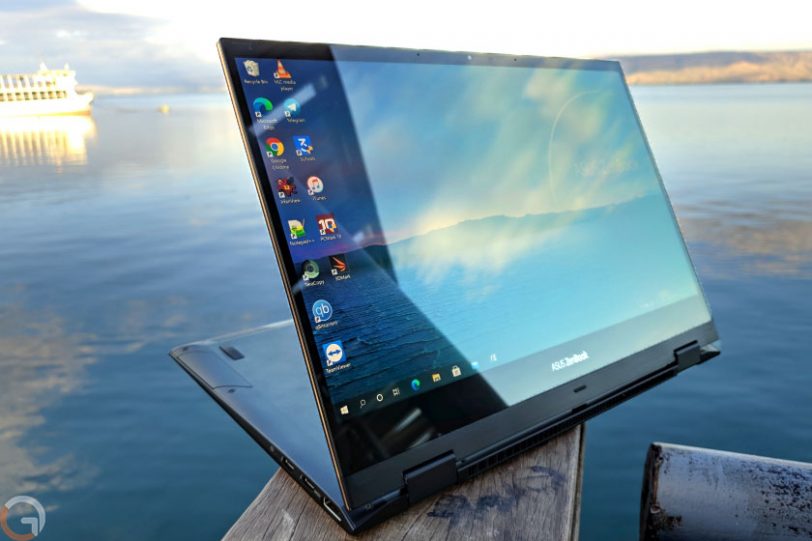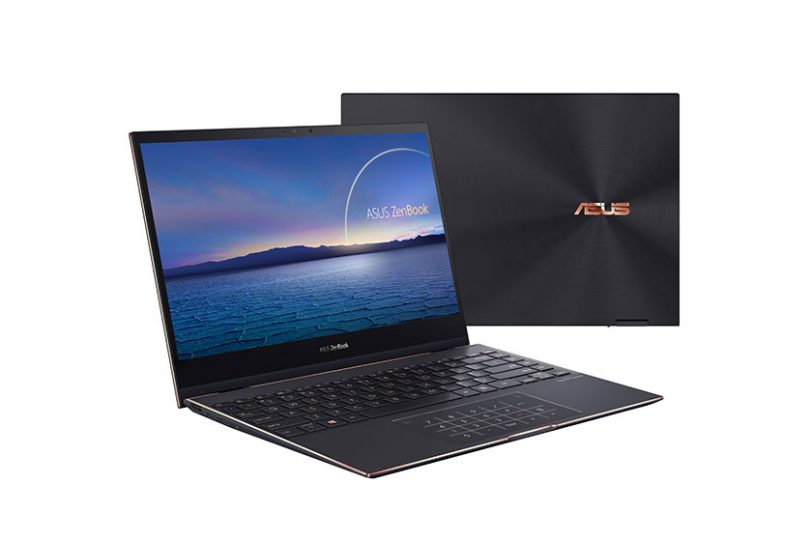

Zenbook Flip S UX371 Photo: Jan Langerman, Gadget)
Article sponsored by ASUS
The OLED screen revolution that has hit the private market in recent years is not limited to the home living room, and more recently you can see more laptops where manufacturers have incorporated OLED screens, a relatively new display technology that comes with a wide range of advantages over more common LCD screens. It has better solutions not only for consuming content, but also for creating content in light of their high display quality.
While OLED screens are perceived as better than older LCD screens, in order to understand why they are better than them, we will first need to present a quick technical explanation of the technological difference between them.
Advantages of OLED screens over LCD in laptops
The old LCD technology, with its many different names: LED, QLED, etc., eventually uses an LCD display layer (or “liquid crystal display” in Hebrew), with backlighting in a variety of technologies to display the image. In contrast, the newer OLED technology (or “organic light emitting diode” in Hebrew) is fundamentally different, as it uses independent organic LED cells to display each pixel individually and without the need for separate backlighting.
The fact that each pixel works independently and does not require separate backlighting, allows OLED screens to display an image with extremely high quality colors, with a much greater contrast of 1,000,000: 1 since each pixel can display true black color by turning off the pixel itself, what Which contributes to higher image quality than a standard LCD screen, with wide dynamic range (HDR) and many other benefits. Already today, OLED technology can be found not only in TV screens, but also in many mobile devices that come with OLED or AMOLED screens, and make it easy to see the difference in display quality compared to devices with LCD screens.

Zenbook Flip S UX371 (Photo: ASUS)
OLED screens on ASUS laptops
OLED technology has also begun to enter the mobile market, including ASUS laptops, which in some of its series offer the option of OLED screens that provide extremely high image quality compared to a standard LCD. They meet 100% DCI-P3 color standard and 133% sRGB color standard, compared to standard laptops with LCD screens, most of which support less than 100% sRGB color standard, making OLED screens ideal not only for content consumption On mobile, but also for his creation. In this way, the mobiles with the OLED screens become an advantage for content creators who need a mobile with a screen with a particularly precise color for creating the content, while the ASUS OLED screens even come with PANTONE’s color calibration certificate to ensure extremely accurate image quality.
Although color accuracy is an important issue, it is not the only advantage of OLED technology in ASUS mobile screens, with the other advantages being:
- VESA’s DisplayHDR 500 True Black certification, which guarantees not only high quality HDR like the standard DisplayHDR 500 standard with 500 nits backlighting, but also “true black” achieved through OLED technology and greater coverage of 75% of what HDR, compared to only 46% on a standard LCD screen in the DisplayHDR 500 standard.
- Ultra-low response times of 0.2ms. Better response speed even from the best dedicated gaming screens on the market, which allows for a high-quality and smooth image even in fast-paced scenes or intense games.
- 70% lower level of blue light from the screen compared to a standard LCD screen with approval from the TÜV Rheinland Institute and SGS. The blue light emitted from the screen is considered harmful to the eyes in the long run, not only for adults but also for children who use the screens to view the content for long hours, so a lower blue light level allows for better eye health.

A closer look at ASUS OLED mobiles
In the case of ASUS, you can already find a number of laptops that come with the company’s OLED screens, including the ZenBook Flip S model UX371 that we reviewed on the website, when the company is expected to launch an OLED version of the ZenBook Flip 13 model UX363 soon in Israel. And other laptops.
As stated in the review of the Flip S on the website on the 13.3-inch 4K UHD screen of the laptop (read here), “The only thing that can be said about the screen is that it is nothing short of spectacular“. However, mobile OLED screens are just part of their overall equation, with the company’s mobiles coming with Intel’s 11th generation Tiger Lake processors offering a particularly high level of performance compared to previous generations and long battery times as part of the new Intel EVO standard stand. .
Similar to the field of televisions, where LCD TVs still dominate its various versions, in the field of laptops LCD screens are also considered more common than OLED screens. This is a growing field mainly due to the many advantages of OLED technology compared to LCD, which makes the use of mobiles with OLED screens much more ideal for consumers who want to get a very high image quality, whether they are content consumers or content creators, when in both cases The use of an OLED screen brings with it a respectable collection of benefits.
Learn more about Zenbook Flip S computers on the ASUS website
Smartphones and gadgets at affordable prices and with direct delivery to your home
click here